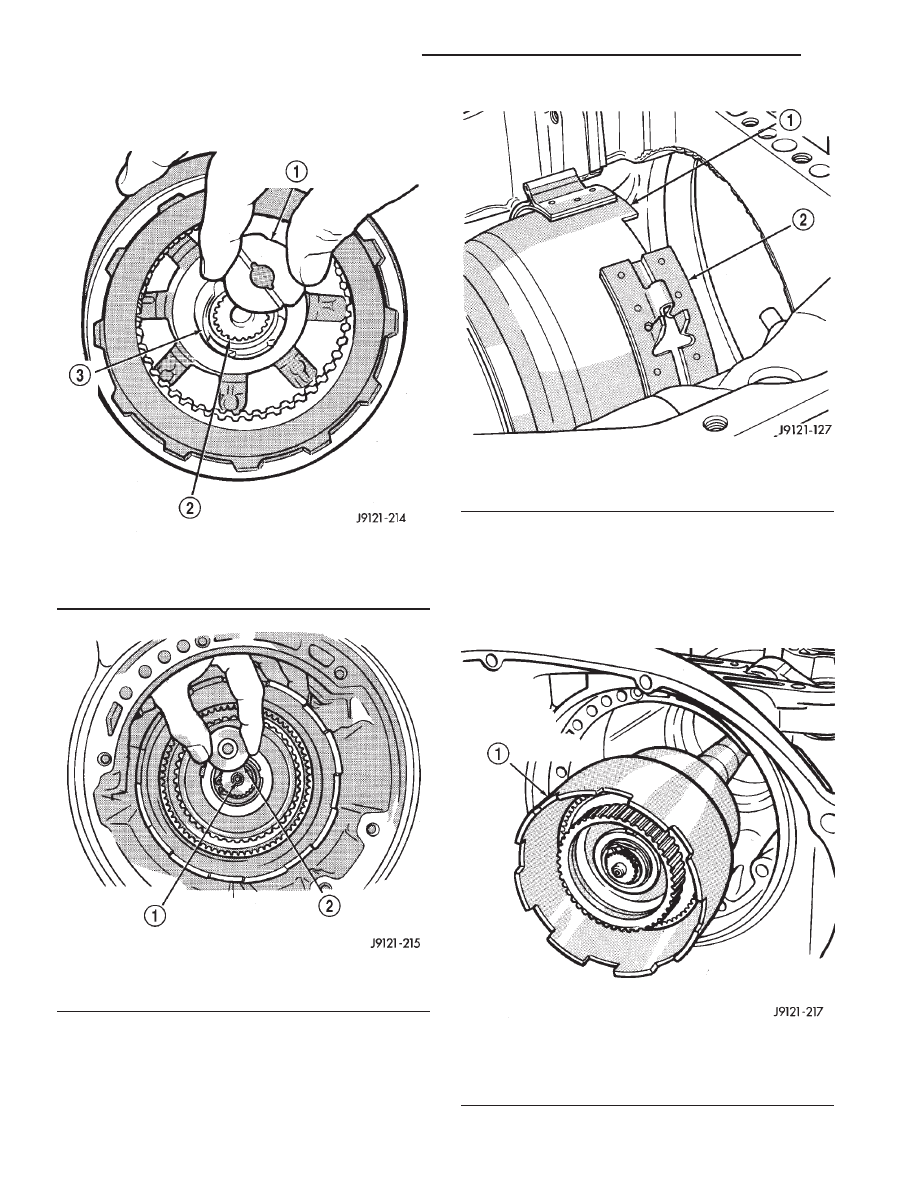Dodge Dakota (R1). Manual - part 616

(26) Slide front band off driving shell (Fig. 27) and
remove band from case.
(27) Remove planetary geartrain as assembly (Fig.
28). Support geartrain with both hands during
removal. Do not allow machined surfaces on interme-
diate shaft or overdrive piston retainer to become
nicked or scratched.
(28) If overdrive unit is not to be serviced, install
Alignment Shaft 6227-2 into the overdrive unit to
prevent misalignment of the overdrive clutches dur-
ing service of main transmission components.
(29) Loosen rear band adjusting screw 4-5 turns.
(30) Remove low-reverse drum snap-ring (Fig. 29).
Fig. 25 Removing Intermediate Shaft Thrust Washer
1 - INTERMEDIATE SHAFT THRUST WASHER
2 - INPUT SHAFT
3 - REAR CLUTCH RETAINER HUB
Fig. 26 Removing Intermediate Shaft Thrust Plate
1 - INTERMEDIATE SHAFT HUB
2 - INTERMEDIATE SHAFT THRUST PLATE
Fig. 27 Front Band Removal
1 - DRIVING SHELL
2 - FRONT BAND
Fig. 28 Removing Planetary Geartrain And
Intermediate Shaft Assembly
1 - PLANETARY GEARTRAIN AND INTERMEDIATE SHAFT
ASSEMBLY
21 - 108
AUTOMATIC TRANSMISSION - 42RE
AN
AUTOMATIC TRANSMISSION - 42RE (Continued)